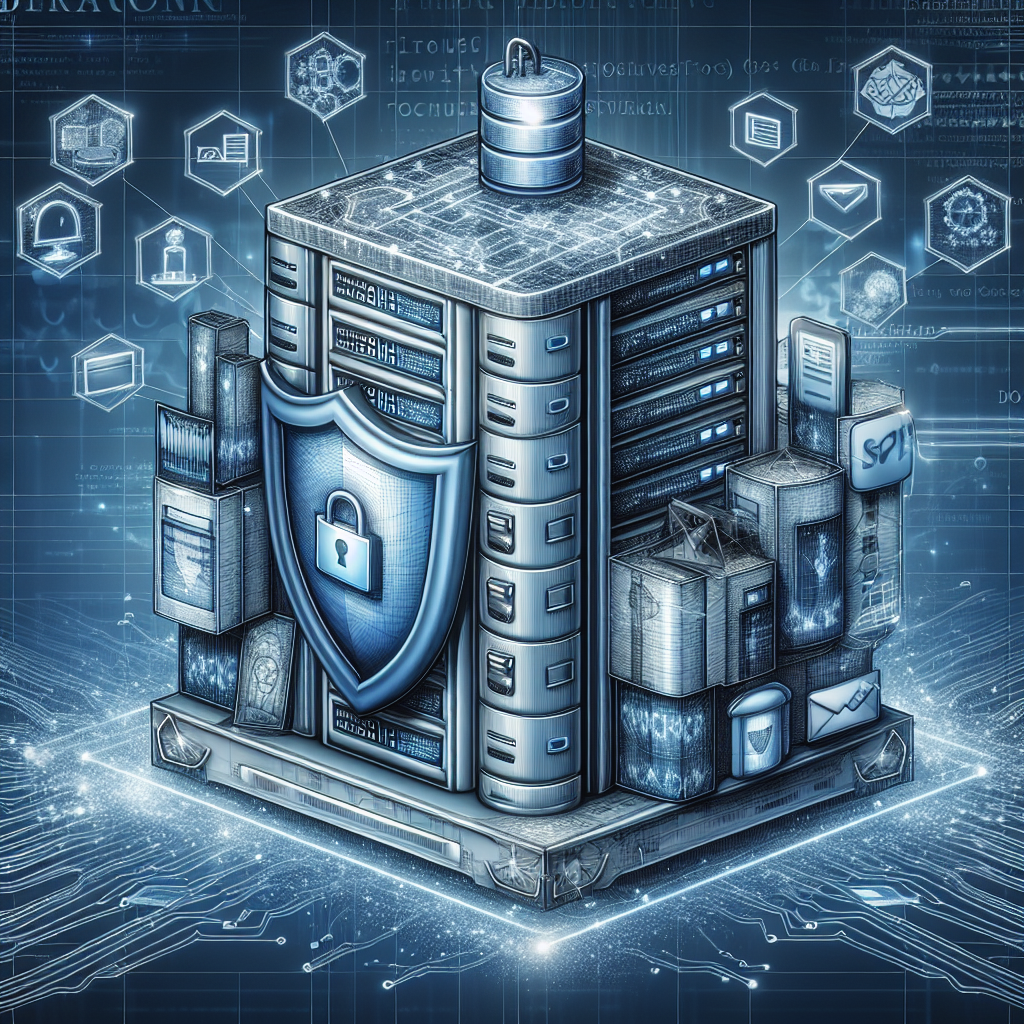Secure Internet Infrastructure Solutions: Safeguarding Our Online World
September 12, 2024 | by Frank Hughes

In today’s digital age, the internet has become an integral part of our daily lives, enabling us to connect, communicate, and transact with ease. However, with this increased reliance on the internet comes the need for secure internet infrastructure solutions to protect our online world from cyber threats and attacks. These solutions aim to safeguard the integrity, confidentiality, and availability of internet services and data, ensuring that our online interactions remain safe and secure. From robust encryption protocols to sophisticated firewalls and intrusion detection systems, secure internet infrastructure solutions play a crucial role in defending against cyber threats and maintaining the trust and privacy of internet users worldwide.
Understanding the Importance of Secure Internet Infrastructure

Defining Internet Infrastructure
Internet Backbone
– The backbone of the internet comprises high-capacity networks that interconnect major hubs worldwide.
– These networks facilitate the transfer of data between different regions and continents.
Data Centers
– Data centers are facilities that house servers, storage systems, and networking equipment essential for online services.
– They store vast amounts of data, ensuring accessibility and reliability for users globally.
Network Protocols
– Network protocols serve as the rules governing communication between devices on the internet.
– Protocols like TCP/IP ensure data integrity and secure transmission across networks.
Domain Name System (DNS)
– DNS translates user-friendly domain names into IP addresses that computers use to locate websites.
– This system plays a crucial role in ensuring seamless internet navigation and accessibility.
Internet Exchange Points (IXPs)
– IXPs are physical locations where different internet service providers connect their networks to exchange traffic.
– By facilitating direct connections between networks, IXPs enhance internet efficiency and reduce latency.
Significance of Security in Internet Infrastructure
In the digital age, the significance of security in internet infrastructure cannot be overstated. With the exponential growth of online activities and data sharing, safeguarding internet infrastructure is crucial for various reasons:
-
Protecting data and privacy: Secure internet infrastructure is vital for protecting sensitive information such as personal data, financial details, and confidential communications. Cyberattacks, data breaches, and unauthorized access pose significant threats to individual privacy and organizational security. By implementing robust security measures in internet infrastructure, data and privacy can be safeguarded against malicious actors seeking to exploit vulnerabilities.
-
Ensuring reliability of online services: A secure internet infrastructure is essential for ensuring the reliability and availability of online services. Downtime due to cyberattacks, network failures, or system vulnerabilities can disrupt businesses, communication channels, and critical services. By prioritizing security in internet infrastructure, organizations can minimize the risk of service interruptions, maintain operational continuity, and enhance user trust in online platforms.
In conclusion, prioritizing security in internet infrastructure is paramount for protecting data, preserving privacy, and sustaining the reliability of online services in an interconnected digital landscape.
Common Threats to Internet Infrastructure
Cyber Attacks
Cyber attacks pose a significant threat to the stability and security of internet infrastructure, targeting various components of the online ecosystem. These attacks can disrupt services, compromise data integrity, and jeopardize user privacy. Understanding the different forms of cyber attacks is crucial in developing effective strategies to safeguard the internet infrastructure.
DDoS Attacks
- Distributed Denial of Service (DDoS) attacks overwhelm a targeted system by flooding it with an excessive amount of traffic, rendering it inaccessible to legitimate users. This can lead to service downtime, financial losses, and reputational damage for organizations. Implementing robust DDoS mitigation solutions is essential to mitigate the impact of such attacks and ensure uninterrupted access to online services.
Malware Infections
- Malware refers to malicious software designed to infiltrate systems, steal sensitive information, or cause harm to devices. Cybercriminals often distribute malware through phishing emails, infected websites, or software vulnerabilities. Deploying comprehensive antivirus programs, conducting regular security updates, and educating users about safe browsing practices are vital steps in preventing malware infections and protecting internet infrastructure.
Phishing Scams
- Phishing scams involve fraudulent attempts to deceive individuals into disclosing personal information such as login credentials, financial details, or other sensitive data. These attacks typically occur through fake emails, websites, or messages that appear legitimate to trick users into providing confidential information. Enhancing cybersecurity awareness, implementing email filtering mechanisms, and utilizing multi-factor authentication can help mitigate the risks associated with phishing scams and enhance the overall security of the online environment.
Vulnerabilities in Network Protocols
-
TCP/IP Weaknesses: The Transmission Control Protocol (TCP) and Internet Protocol (IP) are fundamental to network communication, but they are not immune to vulnerabilities. Attackers can exploit flaws in TCP/IP to intercept and manipulate data packets, leading to unauthorized access to sensitive information or disruption of network services. Common attacks targeting TCP/IP include TCP hijacking, SYN flood attacks, and TCP reset attacks.
-
DNS Vulnerabilities: The Domain Name System (DNS) is a critical component of the internet infrastructure that translates domain names into IP addresses. However, DNS is susceptible to various vulnerabilities that can be exploited by cybercriminals. For example, DNS cache poisoning attacks can redirect users to malicious websites, while DNS spoofing attacks can manipulate DNS records to redirect legitimate traffic to fraudulent sites. Additionally, DNS amplification attacks leverage misconfigured DNS servers to amplify traffic and overwhelm targeted systems.
-
Packet Sniffing Risks: Packet sniffing, also known as network sniffing or packet analysis, is a technique used to monitor and capture data packets transmitted over a network. While packet sniffing is a legitimate tool for network troubleshooting and analysis, it can pose significant security risks if misused. Cyber attackers can conduct packet sniffing to eavesdrop on sensitive information, such as usernames, passwords, and financial data, transmitted over unencrypted connections. By intercepting and analyzing network traffic, malicious actors can extract valuable data and launch various types of attacks, including man-in-the-middle attacks and session hijacking.
-
Spoofing Attacks: Network spoofing involves the falsification of network packets to deceive systems or users into accepting fraudulent data. One common form of spoofing is IP address spoofing, where attackers manipulate the source IP address in packet headers to impersonate a trusted entity or evade detection. By spoofing IP addresses, cybercriminals can launch distributed denial-of-service (DDoS) attacks, bypass access controls, or conduct reconnaissance for more sophisticated attacks. Spoofing attacks can undermine the integrity and authenticity of network communications, making it challenging to trace and mitigate malicious activities.

Implementing Secure Internet Infrastructure Solutions
Encryption Technologies
Encryption technologies play a crucial role in safeguarding our online world by ensuring secure data transmission and communication. Two primary encryption technologies widely used for this purpose include:
-
SSL/TLS Protocols: Secure Sockets Layer (SSL) and Transport Layer Security (TLS) are cryptographic protocols that provide secure communication over a computer network. SSL/TLS protocols encrypt data during transmission, preventing unauthorized access and ensuring the confidentiality and integrity of the information being exchanged.
-
VPN Services for Secure Data Transmission: Virtual Private Network (VPN) services create a secure encrypted tunnel for data transmission over the internet. By encrypting data before it leaves a device and decrypting it upon arrival at its destination, VPNs protect sensitive information from interception by cybercriminals or unauthorized third parties. VPNs are commonly used to secure remote connections and ensure privacy while browsing the internet.
By leveraging encryption technologies such as SSL/TLS protocols and VPN services, organizations and individuals can enhance the security of their internet infrastructure, mitigating the risks associated with cyber threats and ensuring the confidentiality of online communications.
Network Security Measures
In the realm of secure Internet infrastructure solutions, network security measures play a pivotal role in safeguarding our online world. These measures encompass a range of technologies and practices aimed at fortifying the integrity and confidentiality of data transmitted over networks. Two fundamental components of network security measures include:
-
Firewalls: Firewalls serve as a crucial barrier between a trusted internal network and untrusted external networks, such as the internet. By monitoring and controlling incoming and outgoing network traffic based on predetermined security rules, firewalls act as a frontline defense mechanism against unauthorized access and cyber threats. They analyze data packets to determine whether to allow or block traffic, thereby mitigating the risk of malicious intrusions.
-
Intrusion Detection Systems (IDS): IDS are designed to actively monitor network traffic for suspicious activity or potential security breaches. These systems work by analyzing network events and patterns to identify anomalies that may indicate a cyber attack or unauthorized access attempt. Upon detecting such threats, IDS can trigger alerts to network administrators, enabling swift responses to mitigate risks and protect the network infrastructure. Regularly updating IDS signatures and configurations is essential to enhance their effectiveness in detecting evolving cyber threats.
In addition to deploying firewalls and intrusion detection systems, organizations must conduct regular security audits and updates to assess the effectiveness of their network security measures. By staying proactive and vigilant in implementing these strategies, stakeholders can bolster the resilience of their internet infrastructure and uphold the security of the online ecosystem.
Multi-factor Authentication
Implementing Secure Internet Infrastructure Solutions
Enhancing login security with multiple authentication factors
Multi-factor authentication (MFA) is a crucial component of secure internet infrastructure solutions. By requiring users to provide two or more verification factors to access their accounts, MFA significantly enhances login security. These additional layers of authentication go beyond traditional password protection, making it more challenging for unauthorized individuals to gain access to sensitive data.
Preventing unauthorized access to sensitive data
One of the primary benefits of implementing multi-factor authentication is its ability to prevent unauthorized access to sensitive data. Even if a malicious actor manages to obtain a user’s password through methods like phishing or brute force attacks, they would still be unable to access the account without the additional authentication factors. This extra barrier acts as a deterrent, helping to safeguard sensitive information from unauthorized access and potential data breaches.
Best Practices for Securing Internet Infrastructure
Employee Training and Awareness
Educating staff on cybersecurity risks and best practices
Implementing comprehensive training programs for employees is crucial in fortifying the security of internet infrastructure. These programs should cover a wide range of topics, including identifying phishing attempts, creating strong passwords, recognizing malware, and understanding the importance of software updates. By providing employees with the knowledge and skills to navigate potential cyber threats, organizations can significantly reduce the risk of security breaches.
Promoting a culture of security awareness
Fostering a culture of security awareness within the workplace is essential for maintaining a secure internet infrastructure. This involves encouraging employees to remain vigilant, report any suspicious activities promptly, and adhere to established security protocols. By emphasizing the collective responsibility of all staff members in safeguarding the organization’s online assets, a strong culture of security awareness can be cultivated, enhancing overall cybersecurity posture.
Regular Backup and Disaster Recovery Plans
In today’s digital landscape, where cyber threats loom large, organizations must prioritize the implementation of robust backup and disaster recovery plans to safeguard their internet infrastructure. These plans serve as critical components in ensuring data availability and continuity in the face of cyber incidents that could potentially disrupt operations and compromise sensitive information.
Ensuring data availability in case of cyber incidents
Regular backups of essential data are fundamental in mitigating the impact of cyberattacks, system failures, or natural disasters. By consistently backing up data, organizations can reduce the risk of permanent data loss and minimize downtime in the event of an unexpected incident. This proactive approach not only safeguards valuable information but also enhances the organization’s resilience to potential threats.
Implementing robust backup and recovery strategies
Effective backup and recovery strategies involve more than just creating copies of data. Organizations must establish comprehensive plans that outline the frequency of backups, the types of data to be backed up, and the storage locations for redundancy. Additionally, conducting regular testing of backup systems ensures their reliability and identifies any potential weaknesses that need to be addressed.
By integrating regular backup and disaster recovery plans into their internet infrastructure security measures, organizations can fortify their defenses against cyber threats and maintain uninterrupted operations in an increasingly interconnected digital environment.
Collaboration with Cybersecurity Experts
Collaborating with cybersecurity experts is a crucial aspect of ensuring the security of internet infrastructure. By seeking advice from professionals in the field, organizations can gain valuable insights and guidance on the best practices for safeguarding their online systems. These experts bring a wealth of knowledge and experience to the table, allowing businesses to stay ahead of emerging threats and vulnerabilities.
Key Points to Consider:
– Access to Specialized Knowledge: Cybersecurity experts have specialized expertise in identifying and mitigating potential risks to internet infrastructure. Their insights can help organizations proactively address security concerns before they escalate into major breaches.
-
Customized Solutions: By collaborating with cybersecurity experts, businesses can receive tailored recommendations and solutions that are specific to their unique infrastructure and security needs. This personalized approach enhances the overall effectiveness of security measures implemented.
-
Continuous Learning: Staying updated on the latest security trends and threats is an ongoing process. Cybersecurity experts can provide regular updates on emerging risks and evolving attack techniques, enabling organizations to adapt their security strategies accordingly.
-
Risk Assessment: Through collaboration with experts, businesses can conduct thorough risk assessments to identify potential vulnerabilities in their internet infrastructure. This proactive approach helps in implementing preemptive security measures to prevent security incidents.

In conclusion, engaging in collaboration with cybersecurity experts is instrumental in fortifying the security of internet infrastructure. By leveraging their expertise and guidance, organizations can enhance their security posture and effectively safeguard their online world.
Future Trends in Secure Internet Infrastructure
Blockchain Technology
Blockchain technology is revolutionizing secure internet infrastructure by introducing decentralized networks that enhance security measures. Through the use of cryptographic techniques, blockchain ensures that data exchanges are secure and tamper-proof. This innovative approach eliminates the need for a central authority, reducing the risk of single points of failure in the system.
Potential applications in securing online transactions
One of the most prominent applications of blockchain technology is in securing online transactions. By utilizing a distributed ledger system, blockchain can verify and record transactions in a transparent and immutable way. This not only prevents unauthorized alterations to transaction records but also enhances the overall trustworthiness of online financial interactions. Furthermore, blockchain enables real-time tracking of transactions, reducing the likelihood of fraud and ensuring the integrity of the online payment process.
Artificial Intelligence in Cybersecurity
Artificial intelligence (AI) plays a crucial role in enhancing cybersecurity measures to safeguard our online world. By leveraging AI technologies, organizations can significantly improve their threat detection and response capabilities.
- Utilizing AI for Threat Detection and Response
- AI algorithms can analyze vast amounts of data in real-time to identify potential security breaches and abnormal activities that may indicate a cyber threat.
-
Machine learning models can continuously learn from new data to enhance their accuracy in detecting sophisticated cyber threats that traditional security measures might overlook.
-
Automating Security Processes to Mitigate Risks
- AI-powered automation can streamline security processes such as patch management, vulnerability scanning, and incident response, reducing the time to detect and mitigate security incidents.
- By automating routine tasks, cybersecurity professionals can focus on more strategic initiatives to strengthen the overall security posture of the organization.
Quantum Cryptography
Future Trends in Secure Internet Infrastructure
Advancements in quantum cryptography have paved the way for unbreakable encryption methods that leverage the principles of quantum mechanics. Unlike traditional cryptographic techniques that rely on mathematical complexity, quantum cryptography utilizes the inherent uncertainty principle of quantum physics to create keys that are theoretically immune to hacking attempts.
Advantages of Quantum Cryptography:
-
Enhanced Security: Quantum cryptography offers a level of security that is unparalleled in the realm of data protection. The use of quantum key distribution ensures that any eavesdropping attempts are immediately detected, making it virtually impossible for malicious actors to intercept communications without detection.
-
Future-Proofing: With the rise of quantum computing, traditional encryption methods are at risk of being compromised. Quantum cryptography, on the other hand, is poised to withstand the computational power of quantum computers, making it a future-proof solution for safeguarding sensitive information.
-
Global Impact: The widespread adoption of quantum cryptography has the potential to revolutionize data security on a global scale. By establishing a secure foundation for online communications, quantum cryptography can help mitigate cybersecurity threats and protect critical infrastructure from cyber attacks.
FAQs: Secure Internet Infrastructure Solutions: Safeguarding Our Online World
What is the importance of secure internet infrastructure solutions?
Secure internet infrastructure solutions ensure the reliability, availability, and confidentiality of online communications and services. By implementing security measures such as encryption, firewalls, and intrusion detection systems, businesses and individuals can protect sensitive data and prevent cyber threats from compromising their online activities.
How can secure internet infrastructure solutions help prevent cyber attacks?
Secure internet infrastructure solutions use various tools and techniques to detect and prevent cyber attacks, such as malware, phishing, and DDoS attacks. By implementing strong authentication mechanisms, monitoring network traffic, and patching vulnerabilities, organizations can safeguard their online infrastructure and mitigate the risk of cyber threats.
What are some common types of secure internet infrastructure solutions?
Some common types of secure internet infrastructure solutions include VPNs (Virtual Private Networks), SSL/TLS certificates, firewall systems, and network access control solutions. These technologies help protect data in transit, secure network connections, and restrict unauthorized access to sensitive information, ensuring a secure online environment for users.
How can businesses ensure the effectiveness of their secure internet infrastructure solutions?
Businesses can ensure the effectiveness of their secure internet infrastructure solutions by regularly updating security measures, conducting vulnerability assessments, and implementing best practices for network security. By staying informed about the latest cyber threats and security trends, organizations can proactively address potential risks and enhance the security of their online operations.
RELATED POSTS
View all


